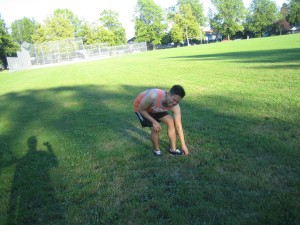An ulcer is basically an open sore on the skin that does not properly heal or the healing process is delayed. It is important to note that an ulcer can develop on the foot due to poor circulation, pressure from overly tight shoes, loss of nerve supply or injuries. Arterial or venous insufficiency and diabetes are the common conditions that are responsible for causing the formation of foot ulcers. Always remember that a foot ulcer is considered as a serious condition. If it is left untreated, it can lead to further problems such as infection or even amputation in severe cases.
How a foot ulcer is diagnosed
The initial step when treating a foot ulcer involves evaluation. Foot ulcers are defined by their size, appearance, location, depth and perimeters. The severity of the ulcer will determine how it must be treated. The ulcer will also be assessed if there are any sinus tracts that lead down to the bone. If there are sinus tracts present or severe infections, the foot should undergo X-ray to determine if the bone beneath the ulcer is also affected. In some cases, an MRI might be required if the infection is profound.

Wound dressing and debridement
In most cases, debridement will be carried out. The process involves scraping away dead skin or infected tissue surrounding the ulcer. This is done by using a scalpel and can help stimulate the wound healing process. This will be followed by wound dressing in which topical dressings are applied in order to protect the ulcer, absorb fluids as well as keeping it clean and minimize the risk for infection. The wound dressings that can be used include hydrogel, foam or calcium alginate. If you want to learn how to perform proper wound dressing, click here.
Compression
In some cases of foot ulcers, the pressure surrounding the ulcer should be drastically reduced. The pressure on an ulcer can slow down the healing and increase the risk for complications. Diabetic individuals might not feel the pressure, thus it is vital for individuals who have foot ulcers to be off-loaded. It is important to note that off-loading can be accomplished by utilizing crutches or a wheelchair but it is also possible to relieve the pressure with a total contact cast. As for a foot ulcer due to venous insufficiency, compression garments can be used to help with the healing process.
Cellular therapy
Cellular therapy can be used when a foot ulcer does not heal. This involves a human skin replacement that is placed over the ulcer. This graft contains special cells, fibroblasts and keratinocytes which stimulate the skin to heal. This is used for diabetic and venous ulcers and highly effective when used on chronic foot ulcers.
Antibiotics and antiplatelet medications
Even if proper treatment is provided, some cases of foot ulcer can become infected. Depending on the severity and type of infection, topical or oral antibiotics can be prescribed by the doctor. The antiplatelet medications are given to prevent clots when treating a venous ulcer.
